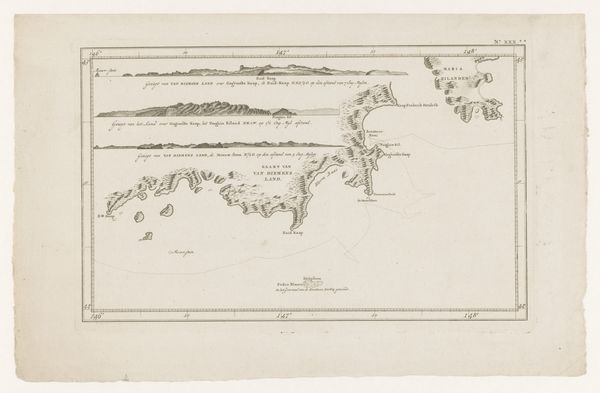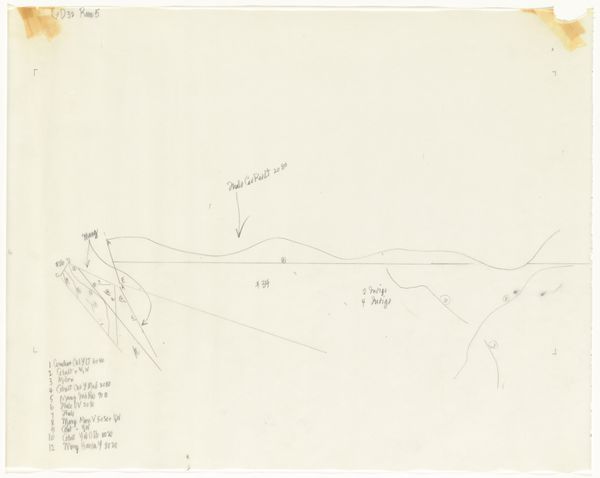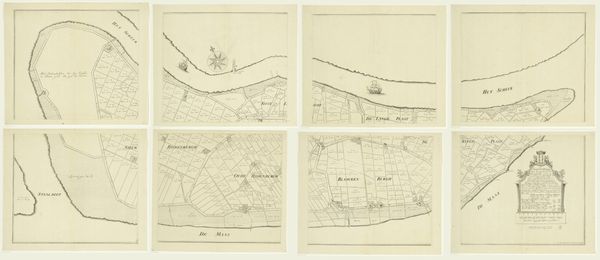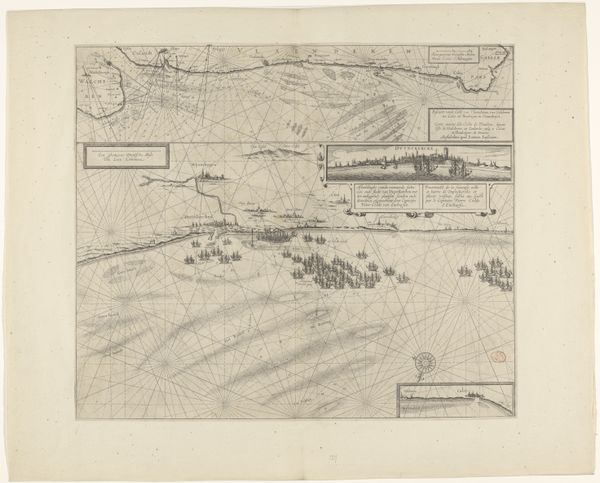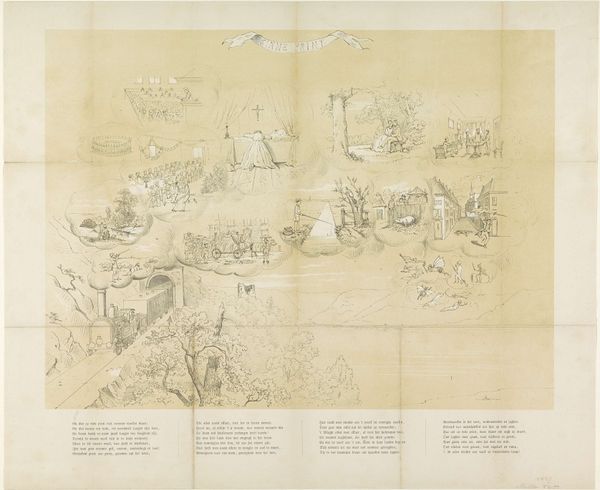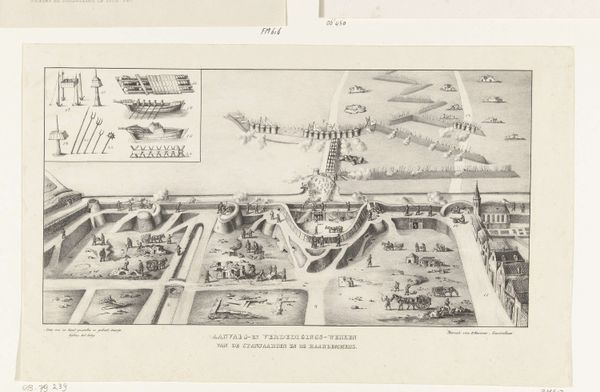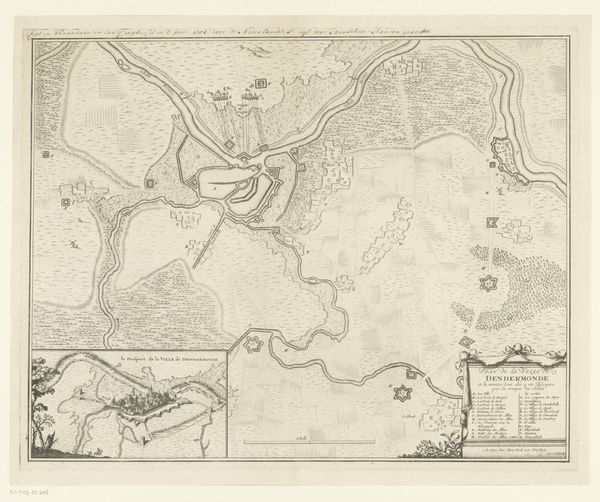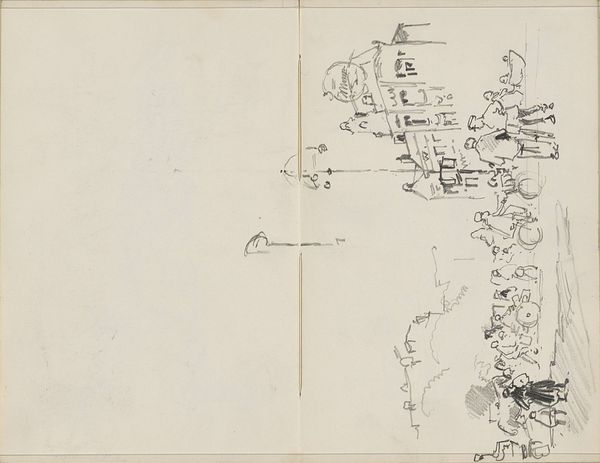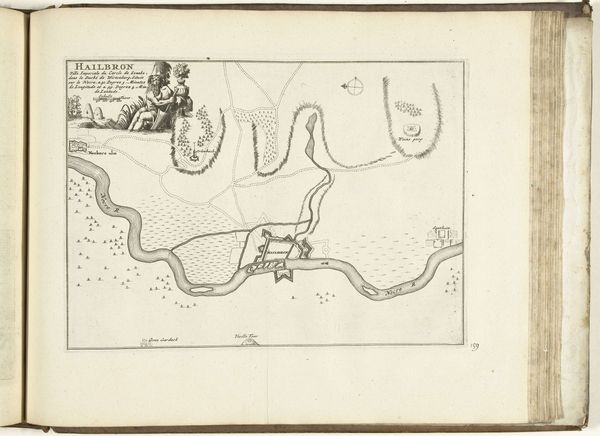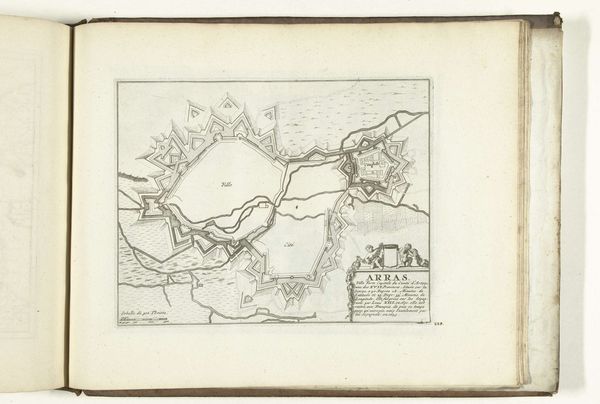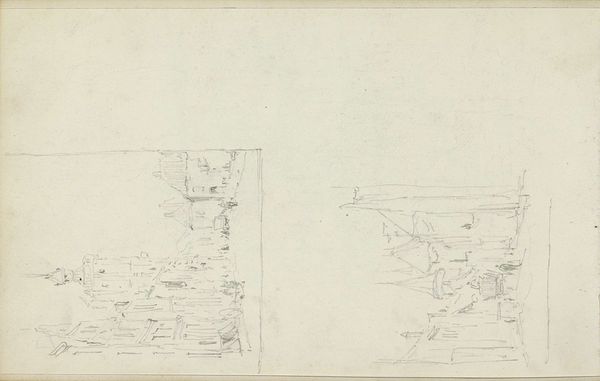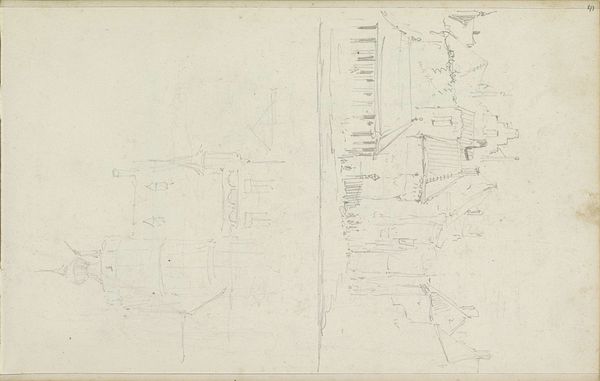
drawing, print, paper, ink
#
architectural sketch
#
drawing
# print
#
landscape
#
paper
#
ink
#
cityscape
Dimensions: height 380 mm, width 460 mm
Copyright: Rijks Museum: Open Domain
Editor: So, this is an anonymous print called "Schets van het Spaanse legerkamp voor Haarlem, 1572-1573," made with ink on paper sometime between 1850 and 1891. It looks a bit like a map... almost sterile, yet hinting at so much conflict. What jumps out at you when you look at it? Curator: It’s interesting how a simple drawing can evoke such complex feelings, isn’t it? I’m drawn to the meticulous detail amidst the implied chaos. This piece whispers of strategies, sieges, and lives hanging in the balance, wouldn’t you say? It also kind of reminds me of an architect's blueprint, doesn't it? Do you think the artist focused more on portraying accuracy, or telling a specific story, a propaganda of sorts perhaps? Editor: Propaganda! I hadn’t considered that angle. I suppose it could be both accurate and persuasive. Were maps often used as tools of persuasion back then? Curator: Absolutely. Information, or selective information rather, is power, always has been. Maps were strategically employed during times of conflict. Consider the almost romantic way they present some structures compared to the...utilitarian rendering of others. Who's story do *you* think they were trying to sell? Editor: Probably the side that commissioned it, right? The level of detail feels almost detached, and clinical, as you were saying before... Makes it hard to connect with the human element of the conflict, which is perhaps the point. Curator: Exactly! The map-like quality might also emphasize a sense of control. And what could that signify, during this period in the Netherlands' history? Editor: This makes me rethink my initial reaction entirely. It is a powerful piece of storytelling...concealing its intent in plain sight, so to speak. Curator: Precisely! These kinds of deceptive visuals were actually very widespread during this time. There is a lot we can uncover simply from analysing it. Editor: Thank you! I’ve definitely learned a new way to look at historical art, especially considering potential intent and subtext.
Comments
No comments
Be the first to comment and join the conversation on the ultimate creative platform.
